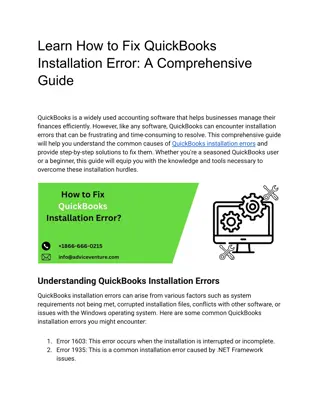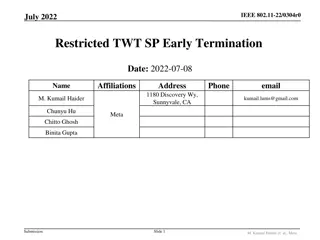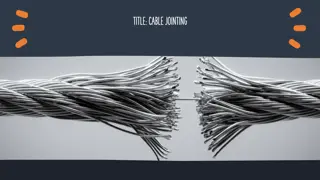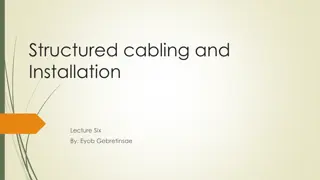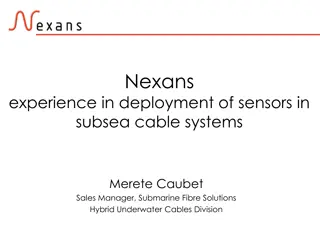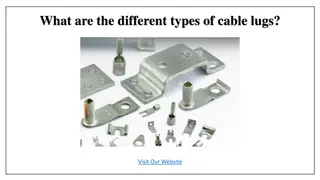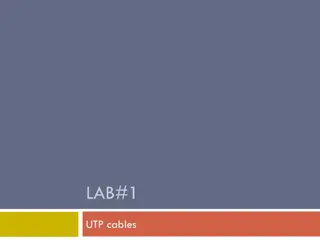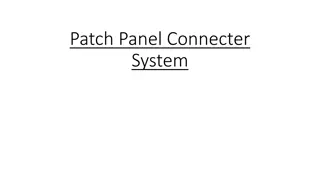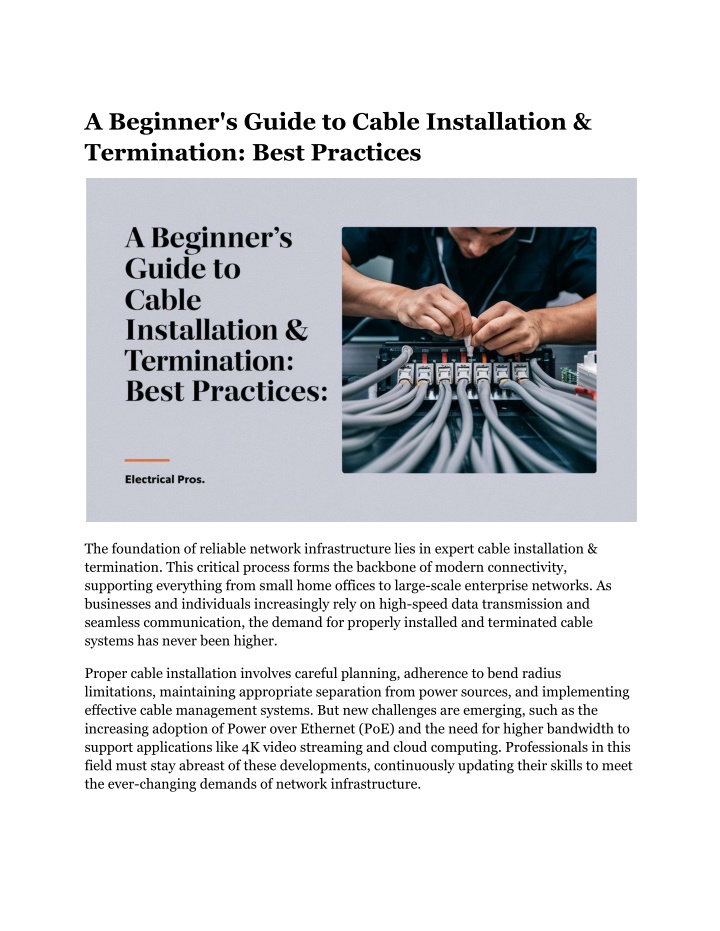
A Beginner's Guide to Cable Installation & Termination_ Best Practices
Learn essential tips and best practices for cable installation and termination. Start your journey to becoming a pro with our easy guide!n
Download Presentation

Please find below an Image/Link to download the presentation.
The content on the website is provided AS IS for your information and personal use only. It may not be sold, licensed, or shared on other websites without obtaining consent from the author. If you encounter any issues during the download, it is possible that the publisher has removed the file from their server.
You are allowed to download the files provided on this website for personal or commercial use, subject to the condition that they are used lawfully. All files are the property of their respective owners.
The content on the website is provided AS IS for your information and personal use only. It may not be sold, licensed, or shared on other websites without obtaining consent from the author.
E N D
Presentation Transcript
A Beginner's Guide to Cable Installation & Termination: Best Practices The foundation of reliable network infrastructure lies in expert cable installation & termination. This critical process forms the backbone of modern connectivity, supporting everything from small home offices to large-scale enterprise networks. As businesses and individuals increasingly rely on high-speed data transmission and seamless communication, the demand for properly installed and terminated cable systems has never been higher. Proper cable installation involves careful planning, adherence to bend radius limitations, maintaining appropriate separation from power sources, and implementing effective cable management systems. But new challenges are emerging, such as the increasing adoption of Power over Ethernet (PoE) and the need for higher bandwidth to support applications like 4K video streaming and cloud computing. Professionals in this field must stay abreast of these developments, continuously updating their skills to meet the ever-changing demands of network infrastructure.
Planning and Preparation: The cornerstone of any successful cable installation project lies in meticulous planning and thorough preparation. This crucial phase sets the stage for a smooth installation process and ensures that the final result meets all requirements and standards. Begin by conducting a comprehensive assessment of your needs. Consider the number of rooms or areas that require wiring, estimate the total number of ports needed, and determine the desired network speed. This information will guide your decisions throughout the project. Next, focus on selecting the appropriate cable type. Factors to consider include: Environmental conditions (indoor vs. outdoor installation) Required network performance (e.g., Cat5e for basic needs, Cat6 or Cat6a for higher speeds) Compliance with local building codes and industry standards Equally important is gathering the necessary tools and equipment. A well-stocked toolkit should include: Cable cutters and strippers Crimping tools compatible with your chosen connectors Cable testers for verifying connections Fish tape or pull string for routing cables through walls and ceilings Cable management accessories such as ties and labels Techniques for Cable Installation: With a solid plan in place, it's time to dive into the installation process. Proper cable installation & termination techniques are crucial for ensuring optimal performance and longevity of your network. Start by mapping out the cable route. Keep these key principles in mind: Maintain a minimum separation of 6 inches from electrical cables to avoid electromagnetic interference. Steer clear of "noisy" devices that could disrupt signal quality. Plan for future expansion by leaving room for additional cables. As you begin running cables, adhere to these best practices: Respect the cable's minimum bend radius to prevent internal damage.
Avoid stretching or twisting cables, which can degrade performance. Use cable lubricant for long runs or when navigating tight spaces. Proper cable management is essential for organization and future maintenance. Utilize cable trays, J-hooks, or conduits to support and protect cables. Bundle related cables together, but avoid over-tightening, which can cause signal degradation. Remember to leave adequate slack at termination points. This extra length allows for future adjustments or re-terminations without the need for complete cable replacement. Furthermore, labeling is an often-overlooked but critical step in the installation process. Develop a consistent labeling scheme and clearly mark both ends of each cable. This simple practice can save countless hours during troubleshooting or when making future modifications to the network. Mastering Cable Termination: The final step is perhaps the most critical: properly terminating the cables. This process requires attention to detail and a steady hand to ensure reliable connections. Begin by carefully preparing the cable: Strip the outer jacket, taking care not to damage the inner conductors. Untwist the pairs only as much as necessary, typically no more than 0.5 inches. Selecting the right connector is crucial. For Ethernet cables, RJ45 connectors are standard, but ensure you choose high-quality connectors compatible with your specific cable type. When terminating, follow these guidelines: Adhere to the correct color code (usually T568A or T568B standard). Ensure all conductors are fully inserted into the connector. Use a proper crimping tool to secure the connection. For fiber optic cables, the process differs slightly: Choose appropriate connectors (e.g., SC, LC, ST) based on your network requirements. Clean fiber ends meticulously before termination to ensure optimal signal transmission. Consider using pre-terminated fiber cables for easier installation in complex environments.
After termination, testing is essential. Use a cable tester to verify connectivity and check for issues such as attenuation, crosstalk, or incorrect wiring. For mission-critical installations, consider using a cable certifier to ensure performance meets required standards. In A Nutshell Learning about cable installation and termination is more than just a technical skill it's an investment in the reliability and performance of our increasingly connected world. Excellence in cable installation is achieved through a combination of knowledge, practice, and attention to detail. Just keep learning, and don't hesitate to seek expert advice when faced with complex challenges. At Georgia Technical Services, we understand that robust network infrastructure is the backbone of modern business. Our team of certified professionals brings years of experience in cable installation & termination to every project, ensuring your network is built for performance, reliability, and scalability. We offer comprehensive solutions tailored to your specific needs, from initial planning and design to expert installation and ongoing maintenance. Contact Georgia Technical Services today and together, we'll build a solid foundation for your digital future. Site Article: A Beginner's Guide to Cable Installation & Termination: Best Practices



